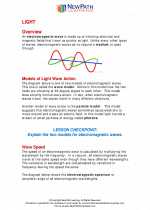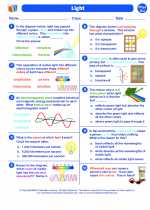Rainbow: Explanation and Study Guide
What is a Rainbow?
A rainbow is a meteorological phenomenon that is caused by reflection, refraction, and dispersion of light in water droplets, resulting in a spectrum of light appearing in the sky. It is a beautiful natural occurrence that can be observed after a rain shower when the sun is shining.
How is a Rainbow Formed?
When sunlight enters a raindrop, it is refracted, or bent, and then reflected off the inside surface of the raindrop. This causes the light to be dispersed into its constituent colors - red, orange, yellow, green, blue, indigo, and violet - creating a circular arc of colors in the sky.
Study Guide
- Formation: Describe the process by which a rainbow is formed, including the role of reflection, refraction, and dispersion of light in water droplets.
- Color Order: List the colors of the rainbow in the correct order, starting with the outermost color and ending with the innermost color.
- Double Rainbow: Explain the phenomenon of a double rainbow and how it is formed.
- Applications: Discuss any practical applications of understanding rainbow formation, such as in the field of optics or atmospheric science.
- Cultural Significance: Research and present information about the cultural significance of rainbows in different societies and belief systems.
Conclusion
Rainbows are not only a beautiful sight but also a fascinating natural phenomenon that can be studied and understood through the principles of physics and meteorology. By exploring the formation, colors, and cultural significance of rainbows, we can gain a deeper appreciation for the wonders of the natural world.








